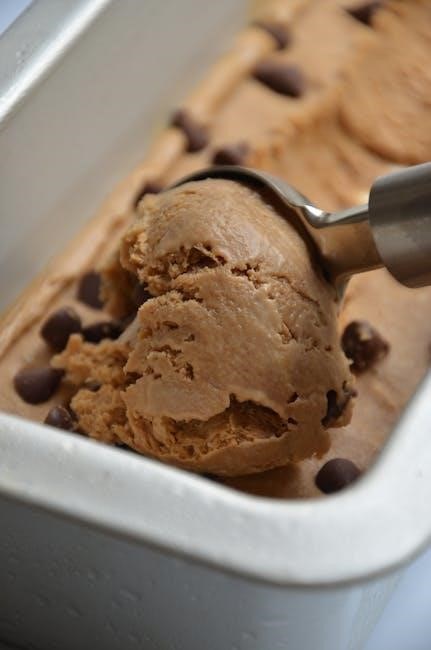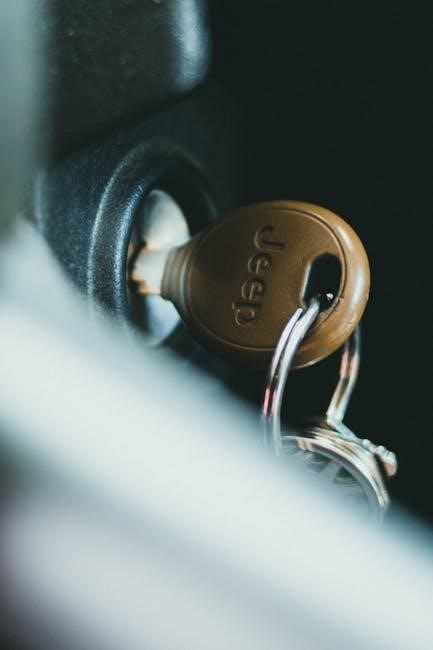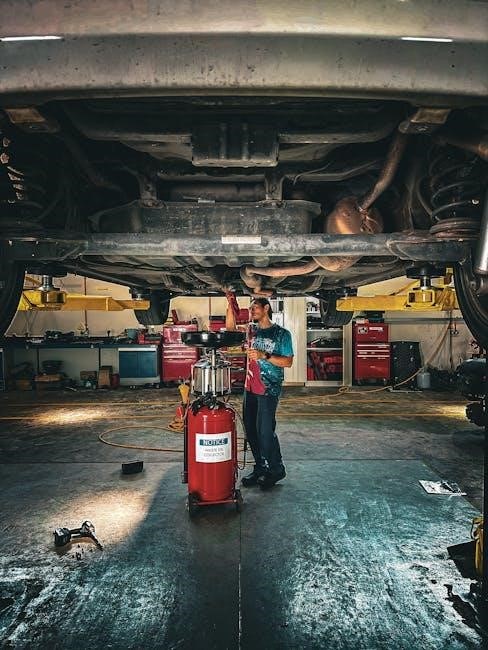Discover the Sunbeam Ice Cream Maker, designed for effortless homemade ice cream creation. Perfect for beginners, it ensures creamy textures with minimal effort and easy cleanup.
Overview of the Sunbeam Ice Cream Maker
The Sunbeam Ice Cream Maker is a convenient and user-friendly appliance designed to create delicious homemade ice cream with ease. It features an automatic churning system, eliminating the need for manual effort. The device is compact, making it perfect for home kitchens, and its intuitive design ensures a straightforward ice cream-making process. Before first use, ensure the unit is placed on a flat surface for at least 12 hours to allow proper operation. Always follow the manufacturer’s instructions for optimal performance and safety.
Importance of Following Instructions
Adhering to the Sunbeam Ice Cream Maker’s instructions ensures optimal performance and safety. Proper assembly, usage, and maintenance are crucial for achieving the best results. Misuse can lead to subpar ice cream texture or potential damage to the device. Always read the manual thoroughly before operation, and follow guidelines for ingredient preparation, churning, and storage. This attention to detail guarantees a smooth and enjoyable ice cream-making experience while prolonging the appliance’s lifespan and maintaining your safety in the kitchen.
Unpacking the Sunbeam Ice Cream Maker
When you unpack your Sunbeam Ice Cream Maker, ensure all components are included and undamaged. Carefully inspect the motor, paddle, and container for any signs of damage. Wash all parts with warm, soapy water, and dry thoroughly before first use. Place the maker on a flat, stable surface, ensuring proper balance. Allow it to rest for at least 12 hours before initial use to prevent any odors or performance issues. Always follow the manufacturer’s guidelines for setup and preparation.
First-Time Usage Preparations
Before using your Sunbeam Ice Cream Maker for the first time, ensure all components are clean and dry. Place the maker on a stable, flat surface and allow it to rest for at least 12 hours to eliminate any initial odors. Plug in the device and test it without ingredients to confirm proper operation. Once ready, prepare your ice cream mixture and pour it into the pre-chilled container. Follow the manufacturer’s guidelines for churning time and temperature to achieve the best results.

Safety Precautions
Always ensure the Sunbeam Ice Cream Maker is used on a stable surface, away from water and children. Avoid submerging electrical parts in liquid and never use an extension cord for operation to prevent hazards.
General Safety Guidelines
Always read the manual thoroughly before using the Sunbeam Ice Cream Maker. Ensure the appliance is placed on a stable, dry surface away from water and children. Never submerge electrical components in liquid or use an extension cord, as this can pose serious safety risks. Keep loose clothing and long hair tied back while operating. Avoid overheating by ensuring proper ventilation around the motor. Follow all instructions carefully to prevent accidents and ensure safe, enjoyable use of your ice cream maker.
Electrical Safety Tips
To ensure safe operation of your Sunbeam Ice Cream Maker, always use the original power cord and avoid extension cords. Keep electrical components dry and never immerse them in water. Plug the appliance directly into a grounded electrical outlet to prevent shocks; Avoid overloading circuits and keep children away from electrical parts. If the cord is damaged, discontinue use immediately. Regularly inspect the power cord for wear and tear to maintain electrical safety and prevent potential hazards during operation.

Understanding the Components
The Sunbeam Ice Cream Maker features a durable motor, a chilled bowl, and a mixing paddle designed to churn ingredients into smooth, creamy ice cream efficiently and quietly.
Key Parts of the Ice Cream Maker
The Sunbeam Ice Cream Maker includes essential components like the motor, paddle, bowl, and lid. The motor powers the churning process, while the paddle ensures even mixing. The bowl is designed to chill the mixture, and the lid prevents splashing during operation. These parts work together seamlessly to create smooth, creamy ice cream. Understanding each part helps in proper assembly and usage, ensuring optimal performance and delicious results every time.
Function of Each Component
The motor drives the paddle, mixing the ingredients thoroughly. The bowl holds the ice cream base, chilling it during churning. The lid keeps everything contained, preventing spills. Together, these components ensure efficient churning, producing smooth, consistent results. Proper function of each part is crucial for achieving the best texture and flavor in your homemade ice cream. Regular maintenance, like cleaning, ensures longevity and optimal performance of the Sunbeam Ice Cream Maker.

Preparing the Ingredients
Select fresh, high-quality ingredients for the best flavor. Ensure all components are measured accurately and mixed thoroughly before churning. A clean, chilled container is essential for optimal results.
Choosing the Right Ingredients
Selecting the right ingredients is crucial for delicious ice cream. Use fresh, high-quality milk, cream, and flavorings like vanilla or cocoa. Ensure all ingredients are measured accurately and chilled before mixing. Avoid boiling milk to prevent curdling. For a creamier texture, balance sugar and fat content. Optional mix-ins like fruits or nuts can enhance flavor. Always sanitize utensils and containers to maintain hygiene. Proper preparation ensures smooth churning and a perfect final texture. Experiment with flavors to create unique recipes tailored to your taste preferences.
Mixing the Ice Cream Base
Mixing the ice cream base is a foundational step for creamy results. Combine heavy cream, whole milk, granulated sugar, and flavorings like vanilla or cocoa in a bowl. Whisk until sugar dissolves and ingredients are well-blended. For enhanced flavor, add mix-ins like melted chocolate or fruit purees. Ensure the mixture is smooth and free of lumps. Cover and refrigerate for at least 2 hours to chill and infuse flavors. A cold base ensures better churning efficiency and a smoother texture in your Sunbeam Ice Cream Maker.
Assembling the Ice Cream Maker
Attach the mixing bowl to the base, ensuring it clicks securely. Align the paddle with the motor shaft and gently push until it locks into place. Place the lid firmly to avoid leaks during churning. Double-check all components are properly aligned for smooth operation. Ensure the appliance is on a flat, stable surface before use.
Step-by-Step Assembly Instructions
Place the base on a stable surface. 2. Attach the mixing bowl, ensuring it clicks into place. 3. Align the paddle with the motor shaft, pressing gently until it locks. 4. Secure the lid firmly to prevent leaks. 5. Plug in the unit and test the paddle rotation without ingredients. 6; Ensure all parts are aligned correctly before adding your mixture. Follow these steps for safe and efficient assembly, ensuring optimal performance when churning your ice cream.
Ensuring Proper Alignment
Begin by placing the base on a stable surface and ensure it is level. 2. Attach the mixing bowl to the base, aligning it with the locking mechanism until it clicks securely into place. 3. Next, insert the paddle into the motor shaft, making sure it aligns with the designated notch. Gently press down until you hear a distinct click, indicating it is properly locked. 4. Finally, place the lid on top of the mixing bowl, ensuring it aligns with the guide pins. Press down firmly until it clicks into position. Proper alignment is crucial for smooth operation and even mixing of your ice cream ingredients. Always double-check that all parts are securely and correctly aligned before starting the machine to avoid any issues during the churning process.

Churning the Ice Cream
Start the machine and let it churn for 20-30 minutes. Monitor the consistency through the lid. Once the ice cream reaches your desired thickness, stop the machine and transfer it to an airtight container immediately for freezing.
Operating the Ice Cream Maker
Plug in the Sunbeam Ice Cream Maker and ensure the paddle is securely attached. Pour the prepared mixture into the chilled bowl. Start the machine and let it churn for 20-30 minutes. Monitor the consistency through the transparent lid. Once the ice cream reaches your desired thickness, turn off the machine. Avoid overfilling, as this can damage the motor. Always operate on a flat, stable surface and keep the area clean. Never submerge the paddle or motor in water. Proper operation ensures smooth, creamy results every time.
Monitoring the Churning Process
During operation, monitor the ice cream’s consistency through the transparent lid. The mixture will thicken gradually, and you may hear a change in the motor’s sound. Stop the machine once the desired texture is achieved, usually within 20-30 minutes. Avoid overfilling, as this can hamper performance. Ensure the ice cream mixture is evenly distributed. If needed, pause to scrape down the sides with a spatula. Always keep the area clean and never leave the machine unattended while in use.
Transferring and Freezing
Once churned, transfer the ice cream to an airtight container and place it in the freezer to harden for at least 2 hours at 0°F (-18°C) for optimal texture. Cover tightly to prevent ice crystals and freezer burn, ensuring freshness and creaminess. This step finalizes the process, making your homemade ice cream ready to enjoy.
Transferring the Ice Cream to a Container
After churning, carefully transfer the ice cream to an airtight container using a rubber spatula to ensure no mixture is left behind. Avoid over-handling to maintain its creamy texture. If adding mix-ins, gently fold them into the ice cream before transferring. Use a clean, dry container to prevent contamination. Cover the container tightly to prevent ice crystals from forming. Label and date the container for easy identification. This step ensures your homemade ice cream stays fresh and ready for enjoyment.
Freezing Instructions for Optimal Texture
For optimal texture, transfer the churned ice cream to an airtight container and place it in the coldest part of your freezer. Allow it to harden for at least 2 hours to achieve a scoopable consistency. Avoid frequent freezer door openings to maintain consistent freezing. If using mix-ins, fold them in gently before freezing to prevent ice crystals from forming. Proper freezing ensures a smooth, creamy texture and preserves the flavor of your homemade ice cream.

Storing the Ice Cream
Store homemade ice cream in an airtight container in the freezer to maintain freshness and prevent crystallization. Use within two weeks for best flavor and texture.
Proper Storage Methods
For optimal freshness, store homemade ice cream in a freezer-safe, airtight container with a tight-fitting lid. This prevents freezer burn and absorbs odors. Label and date the container for easy tracking. Keep it in the coldest part of the freezer, typically at 0°F (-18°C). Avoid cross-contamination by using a dedicated scoop. For best quality, consume within two weeks. Always check the container for any signs of damage or wear before storing to ensure airtight sealing.
Maintaining Freshness
To keep your homemade ice cream fresh, ensure all ingredients are fresh before mixing. Prevent contamination by using clean utensils and storage containers. Optional: add natural preservatives like vanilla extract for longevity. Store in airtight containers to prevent freezer odors. Regularly check for ice crystals, which can affect texture. For best flavor, consume within two weeks. Always re-seal containers tightly after serving. Proper storage and handling will preserve the creaminess and flavor of your Sunbeam-made ice cream.

Cleaning and Maintenance
Regularly clean the Sunbeam Ice Cream Maker with mild soap and water. Avoid harsh chemicals. Dry thoroughly after cleaning to prevent rust and maintain hygiene.
Cleaning the Ice Cream Maker
To maintain your Sunbeam Ice Cream Maker, wash all detachable parts with mild soap and warm water after each use. Avoid using abrasive cleaners or immersing electrical components. Wipe the exterior with a damp cloth. Ensure all parts are dry before storage to prevent rust. Regular cleaning prevents residue buildup and ensures optimal performance for your next batch of homemade ice cream.
Regular Maintenance Tips
Regularly inspect and lubricate moving parts to ensure smooth operation. Check for worn-out components and replace them promptly. Store the maker in a dry place to prevent rust. Descale the unit if you notice mineral buildup from water. Avoid harsh chemicals that may damage finishes. Proper maintenance extends the lifespan and keeps your Sunbeam Ice Cream Maker functioning efficiently for years of delicious homemade treats.
Troubleshooting Common Issues
Address issues like inconsistent churning or motor noise by checking alignment, ensuring proper ingredient ratios, and verifying all parts are securely locked before operation begins smoothly.
Identifying and Solving Problems
Common issues with the Sunbeam Ice Cream Maker include uneven churning or failure to start. Check if the motor is overloaded or misaligned. Ensure the paddle is secure. If the mixture is too thick, add a small amount of liquid. For noisy operation, verify all parts are properly assembled. If the machine doesn’t turn on, confirm it’s plugged in correctly and no extension cords are used. Refer to the manual for resets or part replacements. Always ensure the bowl is pre-chilled and ingredients are at the right consistency for smooth operation.
Common Mistakes to Avoid
Avoid overfilling the bowl, as this can lead to poor mixing. Ensure the unit is placed on a stable, flat surface to prevent vibration. Never add hot mixtures directly, as this may damage the bowl. Avoid using extension cords, which can cause motor issues. Don’t neglect pre-chilling the bowl, as this is crucial for even freezing. Overmixing can result in ice crystals, so monitor the churning process closely. Following these guidelines ensures optimal performance and perfect homemade ice cream every time.

Additional Tips for Perfect Ice Cream
For the best results, use high-quality ingredients and precise measurements. Experiment with unique flavors and mix-ins for creativity. Properly pre-chill the bowl for a creamier texture.
Enhancing Flavor and Texture
Enhance your ice cream by incorporating fresh fruits, nuts, or cocoa powder. For a creamier texture, ensure the mixture is aged in the fridge overnight. Proper churning speed and temperature control are crucial. Avoid overmixing to maintain a smooth consistency. Experiment with various flavor combinations, like vanilla with caramel swirls or mint with chocolate chips, to create unique and delicious treats every time.
Creative Mix-In Ideas
Elevate your ice cream by adding unique mix-ins like crushed cookies, caramel sauce, or fresh berries. Try combining brownie bits with nuts for a decadent treat. For a fruity twist, mix in diced mango or pineapple. Candy pieces, like M&M’s or chocolate chips, add fun texture. Consider swirls of peanut butter or Nutella for a creamy contrast. Experiment with unexpected ingredients, such as espresso powder or cinnamon, to create distinctive flavors. Let your creativity shine with each batch for a personalized touch.

Health and Nutrition Considerations
Homemade ice cream allows for healthier ingredient choices, such as reduced sugar or dairy-free options, promoting better nutrition and catering to dietary preferences effectively always.
Healthy Ice Cream Options
With the Sunbeam Ice Cream Maker, you can craft healthier treats by using natural sweeteners like honey or maple syrup, Greek yogurt for protein, and fresh fruits for flavor. Opting for dairy-free bases, such as coconut milk or almond milk, accommodates vegan diets. Incorporating nuts, seeds, or dark chocolate adds texture and nutrients. Homemade ice cream allows you to control ingredients, reducing added sugars and artificial additives, making it a guilt-free indulgence for all, including those with dietary restrictions or preferences.
Nutritional Benefits of Homemade Ice Cream
Making ice cream at home with the Sunbeam Ice Cream Maker offers numerous nutritional advantages. By using fresh, organic ingredients, you can increase the content of essential vitamins and minerals. Incorporating superfoods like berries or spinach boosts antioxidant and nutrient levels. Choosing whole milk or cream provides beneficial fats, while adding protein-rich ingredients like Greek yogurt enhances muscle-building properties. Homemade ice cream allows for a more balanced treat, catering to specific dietary needs and preferences, making it a healthier alternative to store-bought options. Enjoy your treats with added nutritional value and peace of mind.
Storage and Organization Tips
Store your Sunbeam Ice Cream Maker in a clean, dry place, using a cover to prevent dust buildup. Organize ingredients in labeled containers for easy access.
Storing the Ice Cream Maker
After cleaning, store the Sunbeam Ice Cream Maker in a dry, cool place. Use a cover to protect it from dust. Ensure all parts are completely dry to prevent moisture damage. Avoid storing it near direct sunlight or heat sources. Keep the instruction manual in a safe place for future reference. Do not submerge the motor in water during cleaning. Proper storage maintains its performance and longevity, ensuring it remains ready for your next ice cream creation.
Organizing Ingredients
Organize your ingredients by type and shelf life. Label containers clearly to ensure easy access. Store dairy and flavorings in the refrigerator, while dry ingredients like sugars and cocoa powder can be kept in a cool, dry place. Maintain a well-stocked pantry with essentials like vanilla extract, cream, and mix-ins. This organization ensures efficiency when preparing your ice cream base, allowing you to create delicious batches without delays. A tidy workspace enhances the overall ice cream-making experience. Keep frequently used items within easy reach for convenience.
Product Reviews and Ratings
The Sunbeam Ice Cream Maker has received positive reviews for its ease of use and creamy results. Many users praise its compact design and straightforward operation.
Customer Feedback and Experiences
Customers praise the Sunbeam Ice Cream Maker for its ease of use and ability to produce creamy, homemade ice cream. Many appreciate its compact design and straightforward operation, making it a great addition to any kitchen. Some users note that pre-freezing the bowl for 12 hours is essential for optimal results. While it may not handle large batches, the machine is ideal for small gatherings or family use. Overall, the Sunbeam Ice Cream Maker is a reliable choice for those seeking delicious, customizable ice cream at home.
Comparing with Other Ice Cream Makers
The Sunbeam Ice Cream Maker stands out for its affordability and simplicity compared to higher-end models. While it may lack advanced features like automatic temperature control, it delivers consistent results for basic recipes. Users often compare it favorably to pricier brands, noting its ease of use and compact design. For those seeking a budget-friendly option without compromising on quality, the Sunbeam is a strong contender in the ice cream maker market.

Frequently Asked Questions (FAQ)
Common queries include ideal ingredient ratios, churning times, and storage tips. Users often ask about first-use preparations and troubleshooting frozen mixtures. Get answers here.
Common Queries About the Sunbeam Ice Cream Maker
Users often ask about ideal ingredient ratios, churning times, and storage tips. First-time users inquire about preparation steps and odor issues. Troubleshooting frozen mixtures and noise concerns are also frequent. Many wonder about the importance of using rock salt and crushed ice. Additionally, queries about cleaning methods and maintenance routines are common. These questions help ensure optimal performance and delicious results with the Sunbeam Ice Cream Maker.
Clarifying Doubts and Misconceptions
Some users believe the Sunbeam Ice Cream Maker requires pre-freezing, but it doesn’t. Others think boiling milk is necessary, but it’s not. Misconceptions about using extension cords are addressed—avoid them for safety. Noise during operation is normal, not a defect. The initial odor fades after first use. These clarifications help users understand proper usage and troubleshooting for the best ice cream-making experience with the Sunbeam Gelateria.
The Sunbeam Ice Cream Maker simplifies crafting delicious homemade ice cream. With proper use, it delivers perfect results. Enjoy experimenting with flavors and creating memorable treats effortlessly!
Final Thoughts on Using the Sunbeam Ice Cream Maker
The Sunbeam Ice Cream Maker is a fantastic kitchen companion for ice cream enthusiasts. It offers simplicity and efficiency, allowing users to create a variety of flavors. With proper care and maintenance, it ensures long-lasting performance. Always follow the provided instructions to achieve the best results and enjoy the convenience of homemade ice cream whenever desired. Happy churning!
Encouragement to Experiment and Enjoy
Embrace the joy of creating homemade ice cream with the Sunbeam Ice Cream Maker! Experiment with unique flavors, mix-ins, and ingredients to craft personalized treats. From classic vanilla to creative combinations like matcha-green tea or strawberry-balsamic, the possibilities are endless. Don’t hesitate to try new recipes and share your creations with family and friends. Enjoy the satisfaction of homemade goodness and the fun of making something truly special with every churn.










